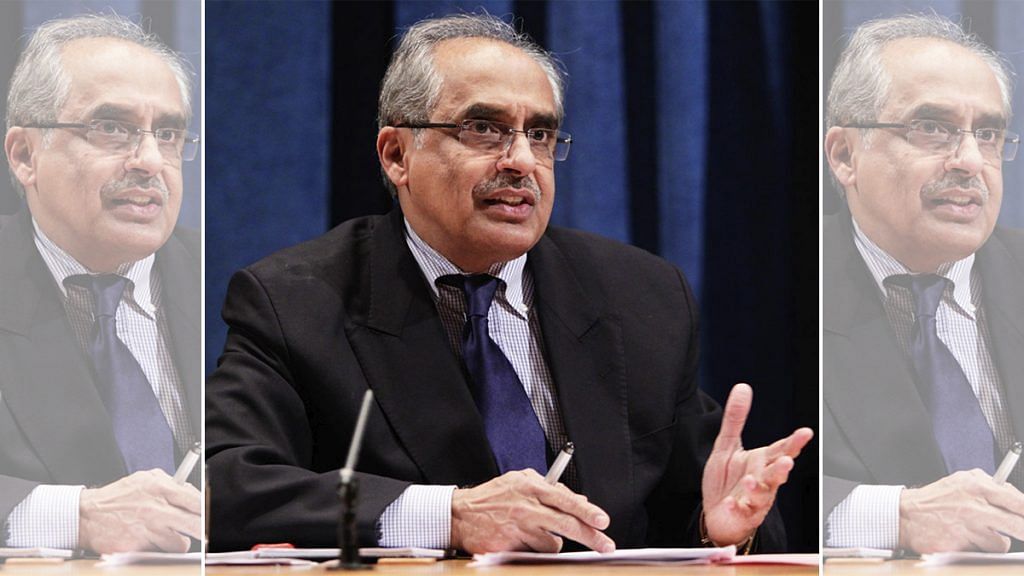New Delhi: China may be interested in pushing Bhutan into a “definitive response” on the longstanding territorial dispute between the two countries, said former Indian ambassador to China Vijay K. Nambiar Wednesday, while commenting on the MoU signed between Beijing and Thimphu to speed up boundary negotiations.
On 14 October, an MoU titled ‘Three-Step Roadmap for Expediting the Bhutan-China Boundary Negotiations’ on the boundary dispute was signed virtually by Chinese Foreign Minister Wu Jianghao and his Bhutanese counterpart Tandi Dorji.
“Perhaps, it is true that the Chinese may be interested in trying to push them further into some kind of definitive response. That would be expected from them,” said the former diplomat who served as India’s ambassador to China from 1996-2000.
Nambiar was speaking at a webinar hosted by the Institute of Chinese Studies (ICS) Wednesday on the linkages between the Tawang region in Arunachal Pradesh, and Bhutan. Other panelists included Sonia Shukla, Adjunct Fellow at ICS, and Patricia Uberoi, Honorary Fellow, and ICS Director and former Indian ambassador to China Ashok Kantha.
ThePrint was a digital media partner for the event.
Without explicitly mentioning the India-China border tensions, Nambiar added: “On the other hand, the recent posturing they [China] have been doing on the border will only add to a certain amount of anxiety on the part of the Bhutanese negotiators and perhaps, also kind of a caution not to want the situation to be aggravated.”
Bhutan and China don’t have diplomatic missions in either country and liaise through their embassies in New Delhi.
Also read: China sees ‘snub’ to India in Bhutan agreement. And Chinese are mocking Ajay Devgn
‘China using MoU to embarrass India’
After the MoU between China and Bhutan was signed, Chinese state media called it “a snub” to India, with some media houses terming it a “blow to Modi’s attempts” to contain China.
“China is using the MoU to embarrass India,” said Shukla, after which she explained how areas like Tawang are vulnerable to Chinese claim.
In June 2020, China, in a surprise move, staked claim over the Sakteng Wildlife Sanctuary in Bhutan. “At the time, it was seen as a tactic to pressurise the Indian government to bring Bhutan to the table for negotiations,” she said, adding that this area had never before featured in any of the boundary talks between Bhutan and China.
Meanwhile, Nambiar and Kantha said it is very likely the Indian government was kept in the loop about the MoU. “There’s nothing particularly shady about this MoU,” said Kantha.
Historical linkages between Tawang & Bhutan, Tibet
Elaborating on the historical and cultural linkages between Tawang and Bhutan and Tibet, Shukla said: “Through the ages, the people who live in eastern India in the areas surrounding Tawang and central Bhutan were both referred to as ‘mon’… which is a basic ethno-regional marker in Tibetan culture… In most references, it includes Bhutan.”
Monpas are one of the major tribes of western Arunachal Pradesh.
Meanwhile, Uberoi drew comparisons between the Panjshir Valley in Afghanistan, which is near the Hindu Kush mountain range, and the countries in the Himalayan region. “People who work on mountain societies are suggesting that there are a lot of commonalities when you get to 8-10,000 feet of altitude — the pasturing of animals, hunting as a way of life and so on,” she said.
Nambiar added: “The midpoint — like you’ve talked about Panjshir and Andarab Valley— the midpoint is actually Ladakh where the Muslim and the Buddhist influence meets”.
Although he agreed that it is important for borders to be seen as “linkages” and “bridges” rather than barriers, Nambiar said, “The trouble is when you have contestation built into the political situation.”
(Edited by Paramita Ghosh)
Also read: Indian Army initiates Tibetology course for its officers amid LAC standoff
